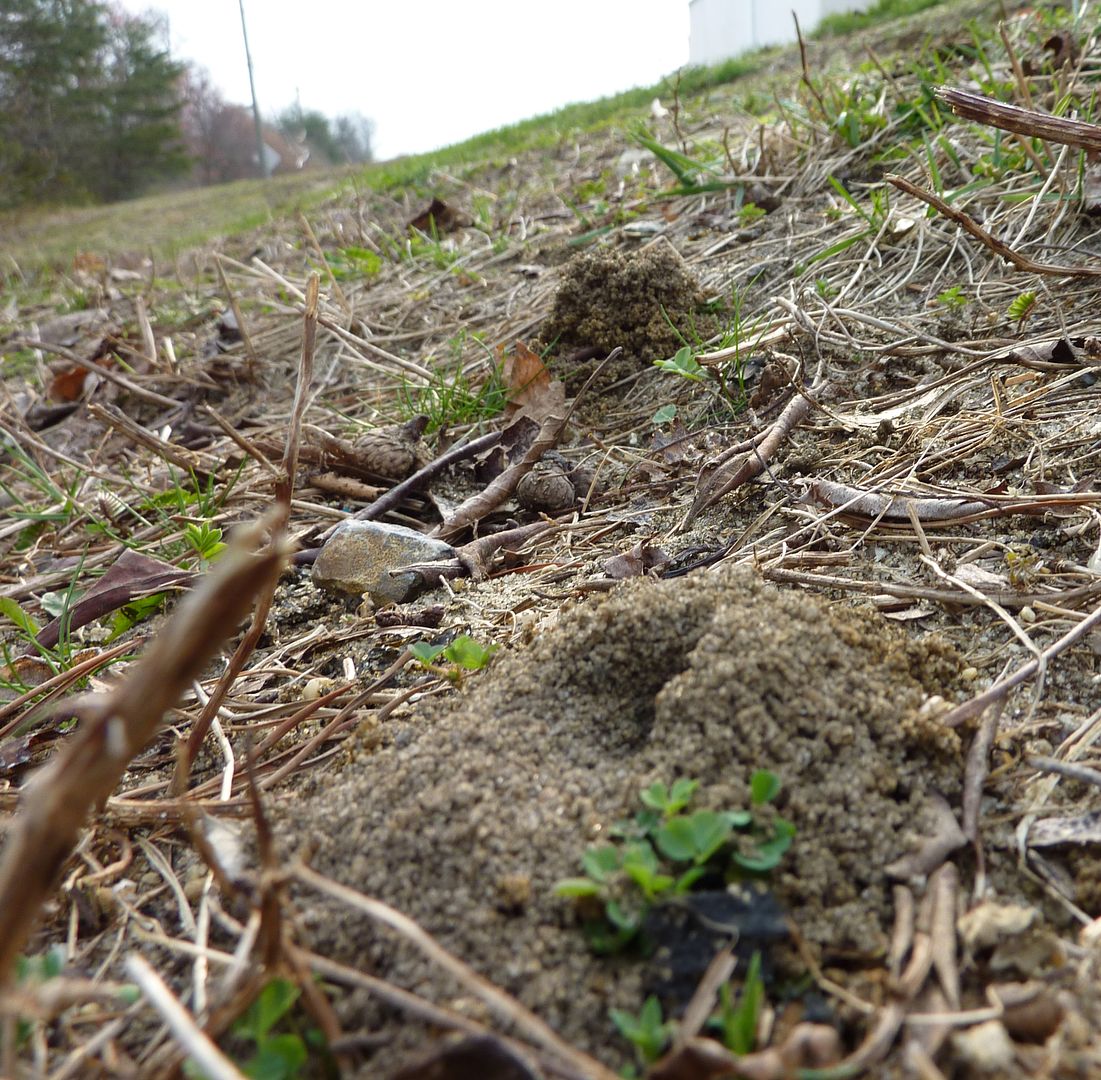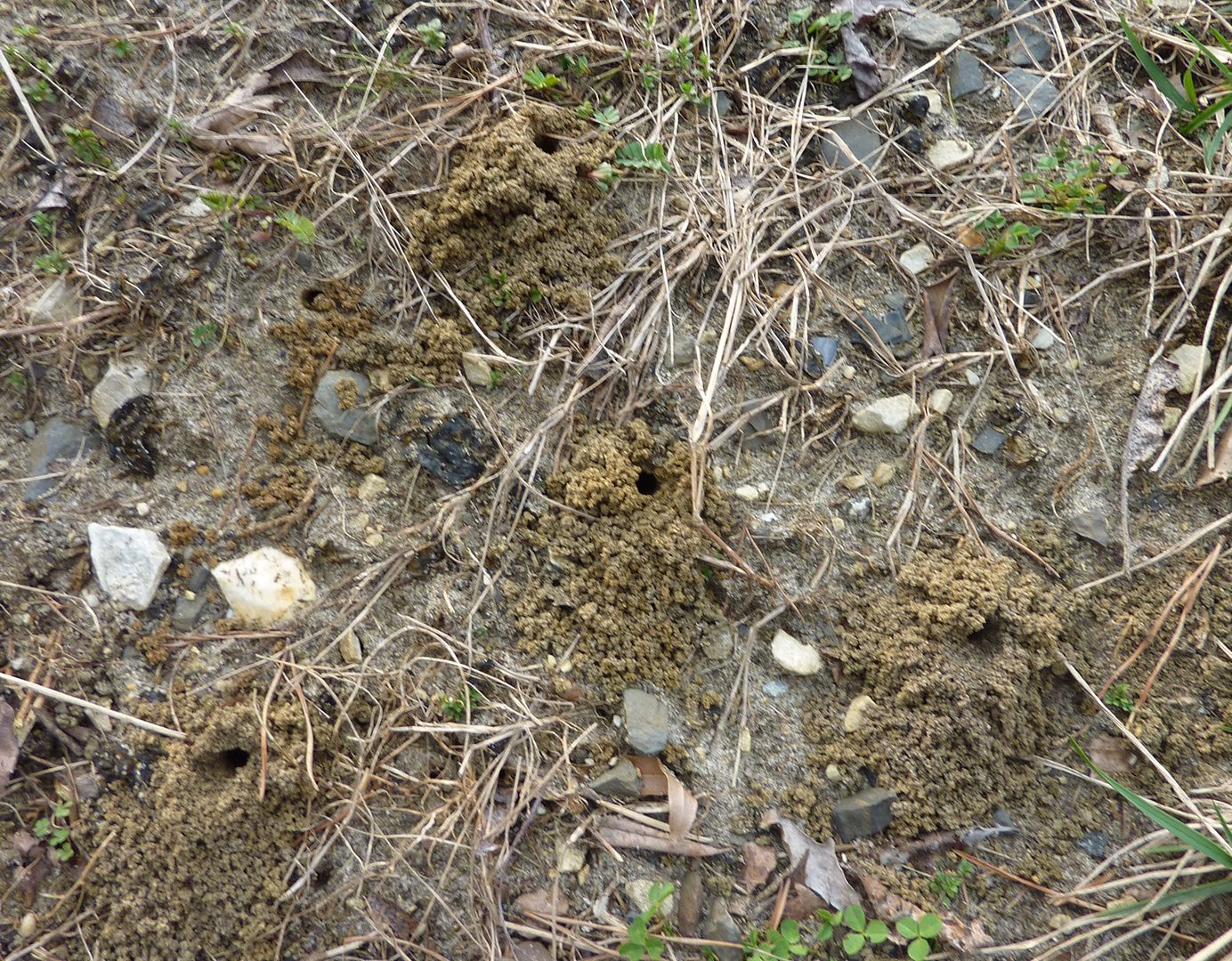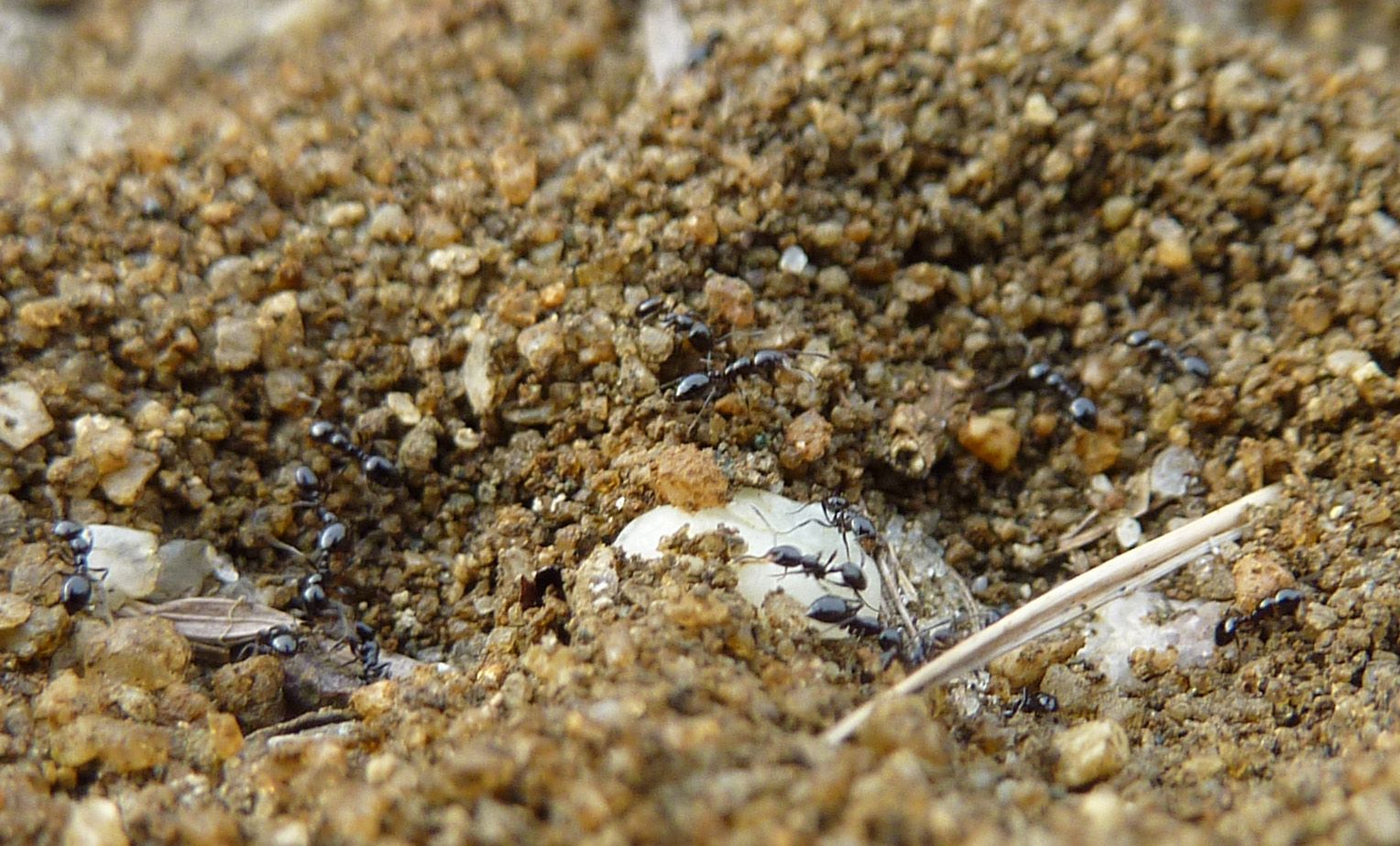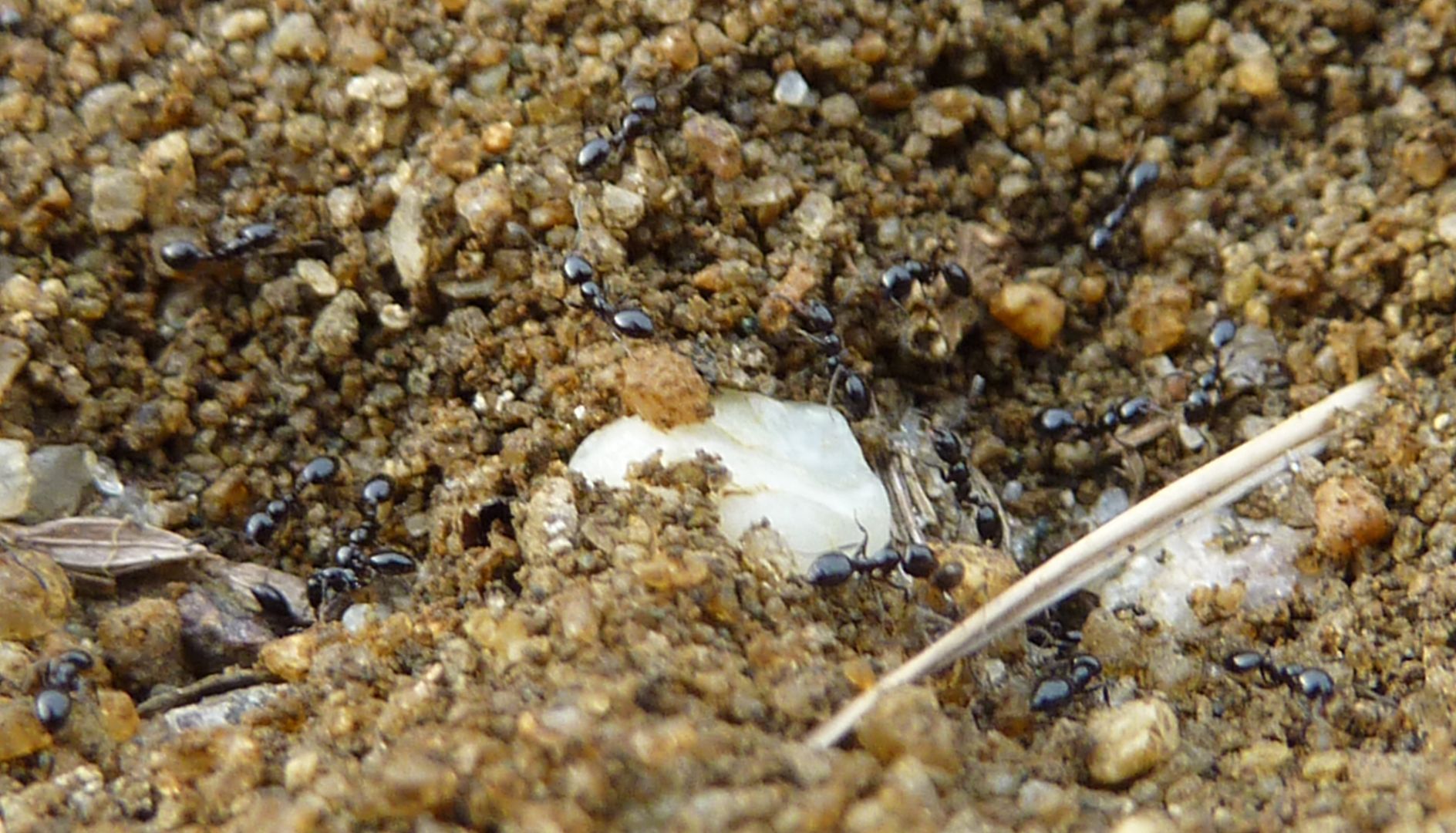It's still a little cold for them to really be out. This hill side wasn't very active. I suspect these are the holes to last year's bees and thus filled with emerging juveniles that have yet to mate. Each female after mating digs a one or two burrows over her life time. And can create upwards of 40 balls of pollen. Each ball is given a single egg to become next year's generation.
They are fairly easy to tell apart from ant hills. The soil has clearly been pushed out in neat, and, assuming it hasn't rained, appears lose and flaky. The entrance is usually perfectly round depending on the size of the bee. They're also very likely found around one another in close proximity where as ant hills are not so much. Usually a diverse array of ants will inhabit such a hill side, each with their own sized entrance hole and mound configuration. Some eliminate the grass around the entrance while others leave it there for example. Also when it's an ant hill it's usually quite obvious from the ant traffic going in and out.
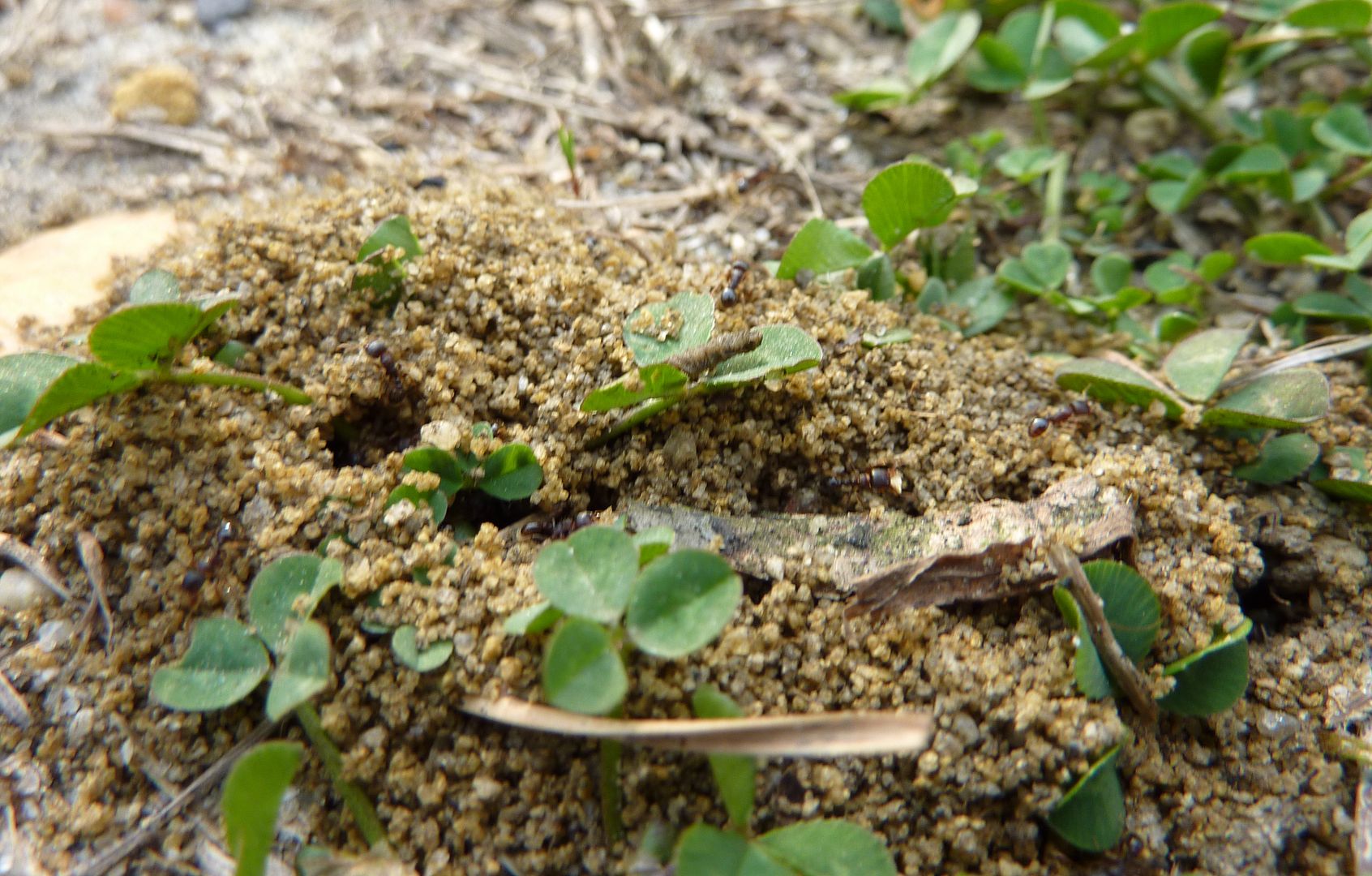
Here is a mound of Pavement ants, Tetramorium species E, for lack of a better species name. You can clearly see from the size of the grains and nest entrance it wasn't constructed by bees. This species is invasive and more than likely in your front lawn, so I didn't bother with a close up this time.
Here we have the smaller mounds to a much smaller ant, Monomorium minimum. Their common name is Little Black Ant. They're about 2mm long or 1/8th an inch. With a smaller ant comes a finer grained mound. I notice they clear away plant matter from their mounts too. They make multiple nest entrances too but it's all comprised in a small patch.
Small enough to test out the capabilities of my new camera. Panasonic Lumix DMC-ZS3 10.1 MP Digital Camera with 12x Wide Angle MEGA Optical Image Stabilized Zoom and 3 inch LCD (Black)
Monomorium minimum is fairly common. They mostly nest in sandy soil but can still be found along sidewalks and driveways. They're probably nesting in the decomposed granite laid under neath. These are considered a harvester ant too and likely go for grass seeds. They're a neat ant but I've never had much luck with them in captivity.
